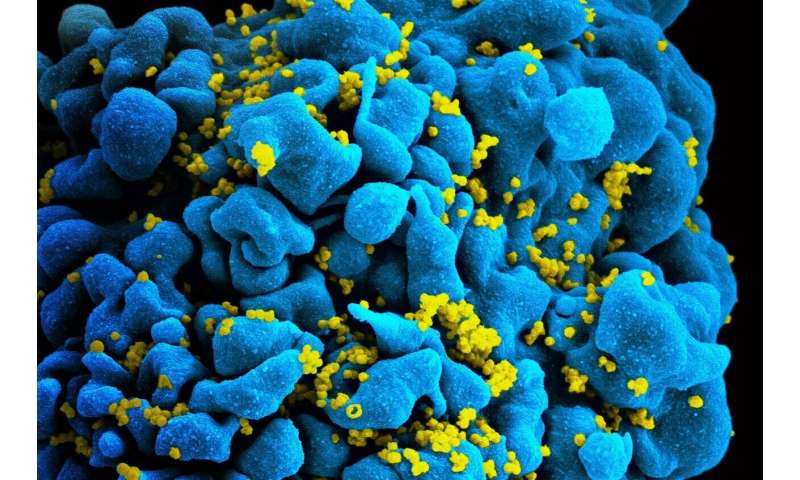Scientists discover first new HIV strain since 2000

Scientist Mary Rodgers spends her days tracking killers—elusive, constantly mutating viruses that travel the globe and are responsible for illness or death in millions of people. Wednesday, in an article published in the Journal of Acquired Immune Deficiency Syndromes, Rodgers and her team at Abbott, along with co-authors at the University of Missouri, announced their discovery of the first new subtype of the HIV virus identified since 2000.
“We’re always looking for viruses,” said Rodgers, who heads the Global Viral Surveillance Program at Lake County-based Abbott, a team of researchers who focus on identifying new strains of hepatitis and HIV and following trends in identified strains. “I think a lot of people might not realize that there is more than one strain of HIV, and at Abbott we’re making tests to catch all these different strains, so it’s important that we know all the different types out there.”
The newly discovered strain, called HIV-1 Group M, subtype L, was first collected in the 1980s in the Democratic Republic of the Congo, but there were only two samples that could be examined via gene sequencing. Abbott researchers, Rodgers said, took note, but could not advance further toward positively identifying a new form of the virus—a third sample was needed to confirm the discovery. In 2001, a sample that appeared to be similar was collected, but this time the sample couldn’t be fully sequenced. “We couldn’t synthesize the virus,” Rodgers said. “The quantity in the sample was just too small.”
Researchers at Abbott maintain a virus library with more than 78,000 samples, and the information about the potential new strain of HIV essentially sat as part of that archive until 2018. “We always wondered if there would be another subtype,” Rodgers said, “and we always thought that there might be another one out there if we just kept looking long enough.”
As with a lot of the science garnering public attention today, Rodgers’ cold case was cracked by advanced DNA sequencing technology. “If you think about the amount of material in a blood sample,” she said, “it’s like a haystack of information that you could sequence. And the HIV in that sample is just a tiny part of the sample. So we’ve literally created technology that acts like a magnet to pull out that needle in the haystack and sequence just the virus.”
With that sequencing, subtype L was confirmed as a variant of the M group of HIV viruses, which are responsible for the AIDS pandemic. Though researchers don’t yet know how the new subtype may affect the body differently, the expectation is that it behaves in much the same way as other M group strains. The discovery is important, said AIDS researcher Thomas Hope, professor of cell and developmental biology at Northwestern University Feinberg School of Medicine, because fighting a virus like HIV requires knowing your enemy. “It’s important for us to understand all the strains that are out there, it’s important for us to understand that the (test) we are using will catch this new virus.”
Current treatments for HIV, which can reduce viral load and prevent illness, are effective against variants of the HIV virus, including the new subtype, meaning that a new strain is not a new public health crisis. But without identification of the strain, doctors can’t test for it. “The most dangerous scenario is that someone goes to the doctor and says give me an HIV test, and the test doesn’t catch it,” Hope said.
Abbott, the company that produced the first test for HIV in the 1980s, is, in part, protecting the viability of its product, which in turn is important for public health.
“The primary concern is that HIV might evolve to the extent that testing wouldn’t work,” Rodgers said. Abbott’s tests can now detect this strain, and the company will share its research with other labs that are working to advance science around HIV. “We definitely don’t work in isolation,” Rodgers said. “We’re sharing this strain with the scientific community so others can work on the strain and hopefully that can advance things like vaccines and treatments.”
Rodgers also will be watching to see whether other cases of subtype L are discovered, now that there is a test for the strain. “We are wondering whether this might be more prevalent than previously known,” she said.
The fact that no new samples of the virus had been discovered for years may mean that it will remain quite rare, Hope said. But it’s the continuing documentation of HIV variants that is most important.
Source: Read Full Article


